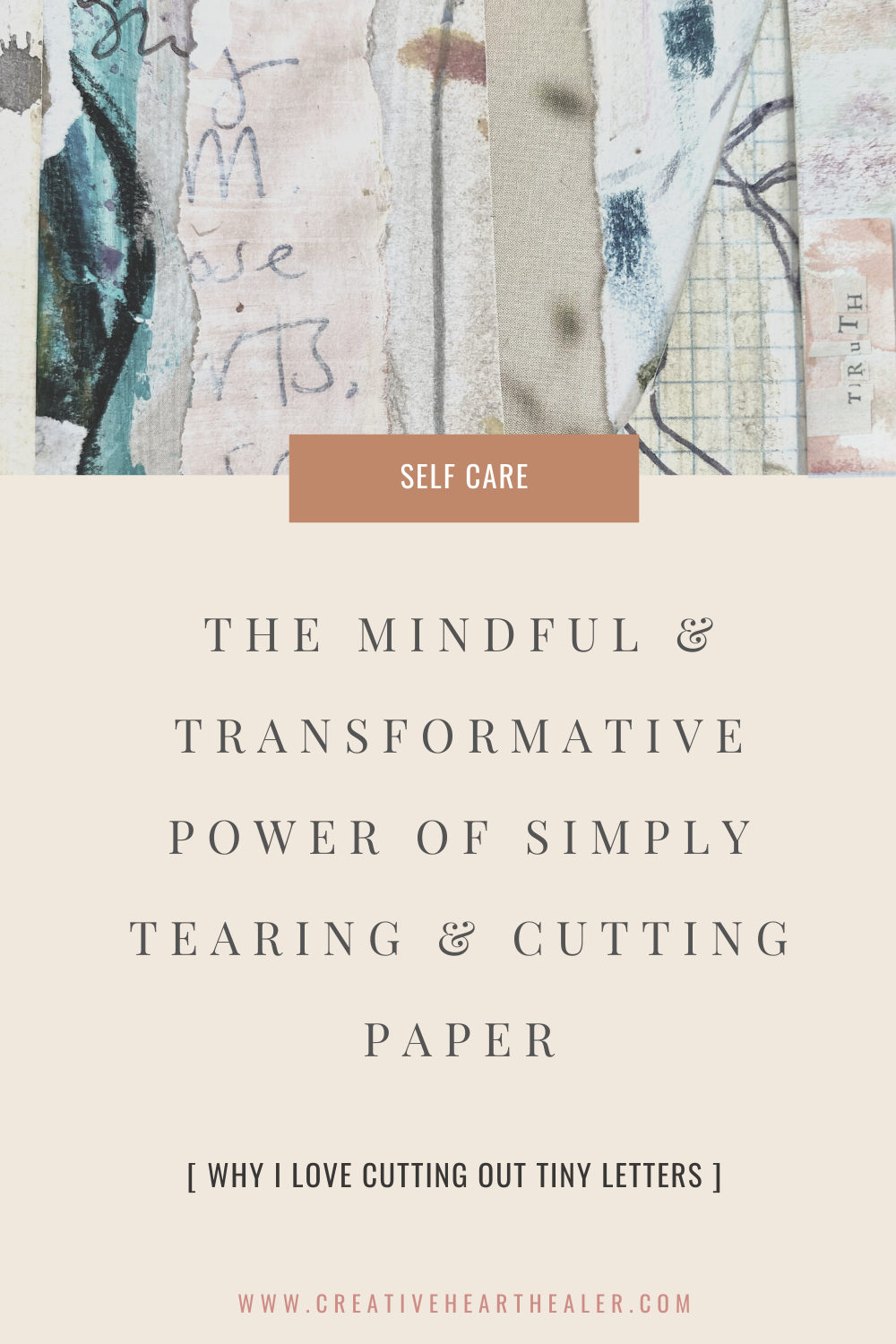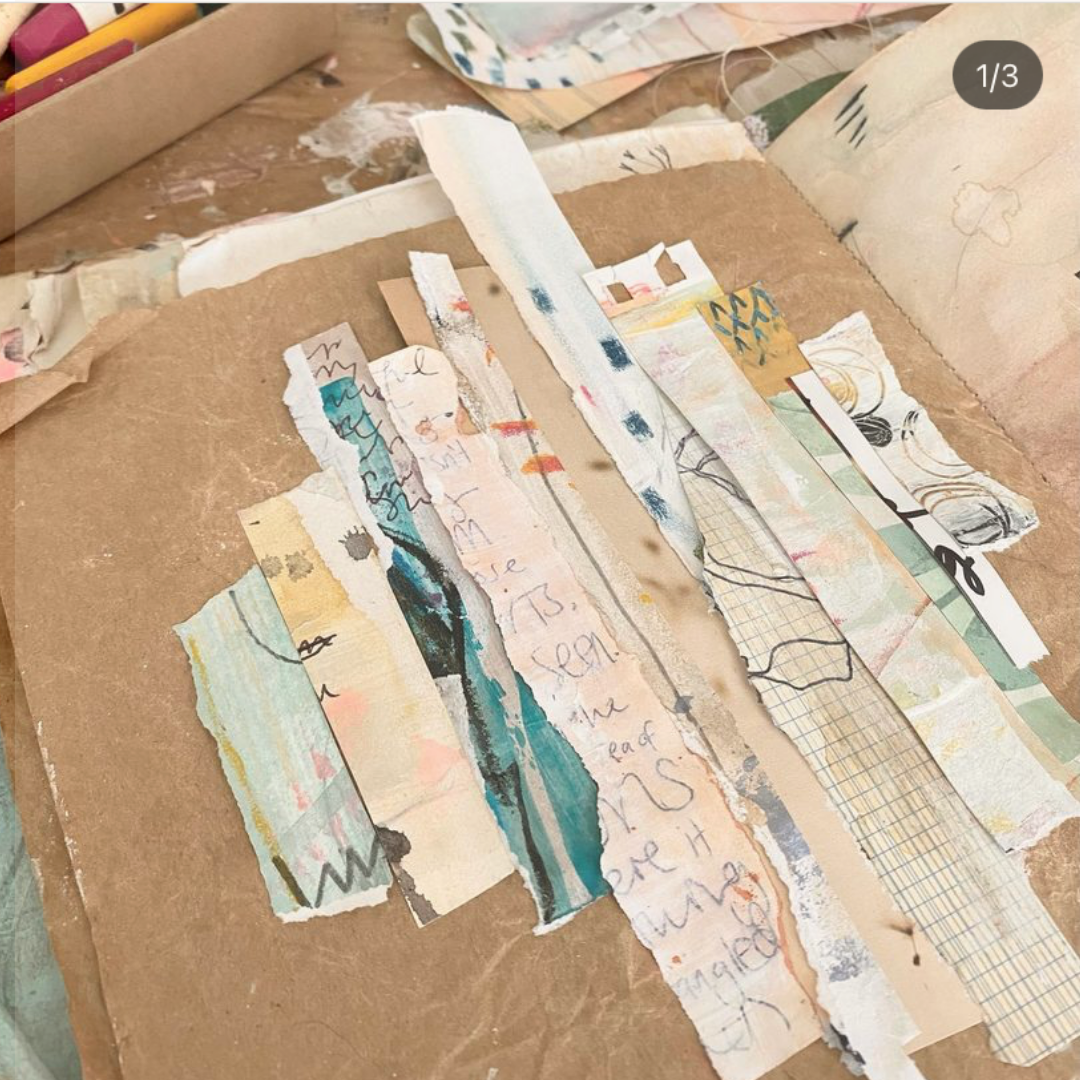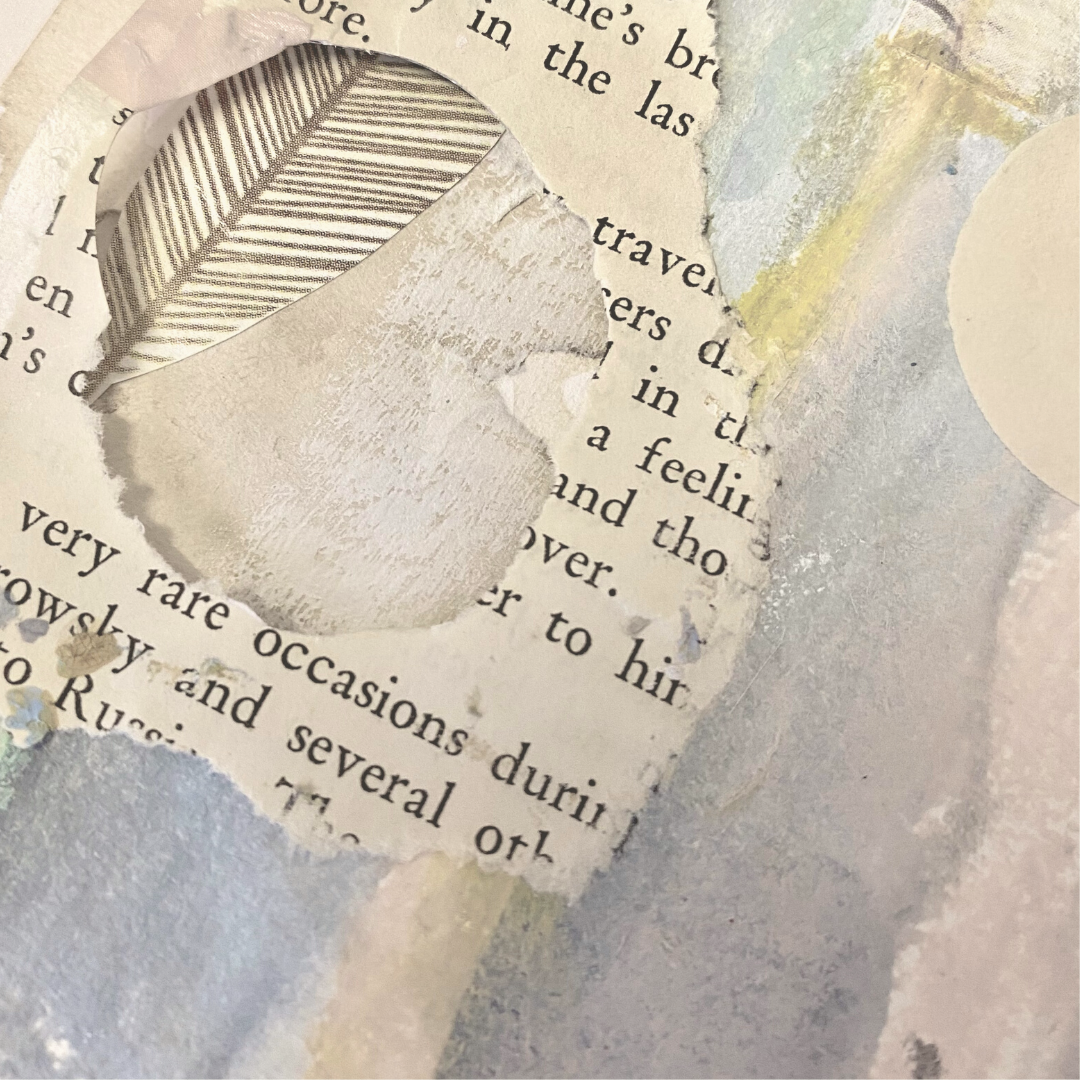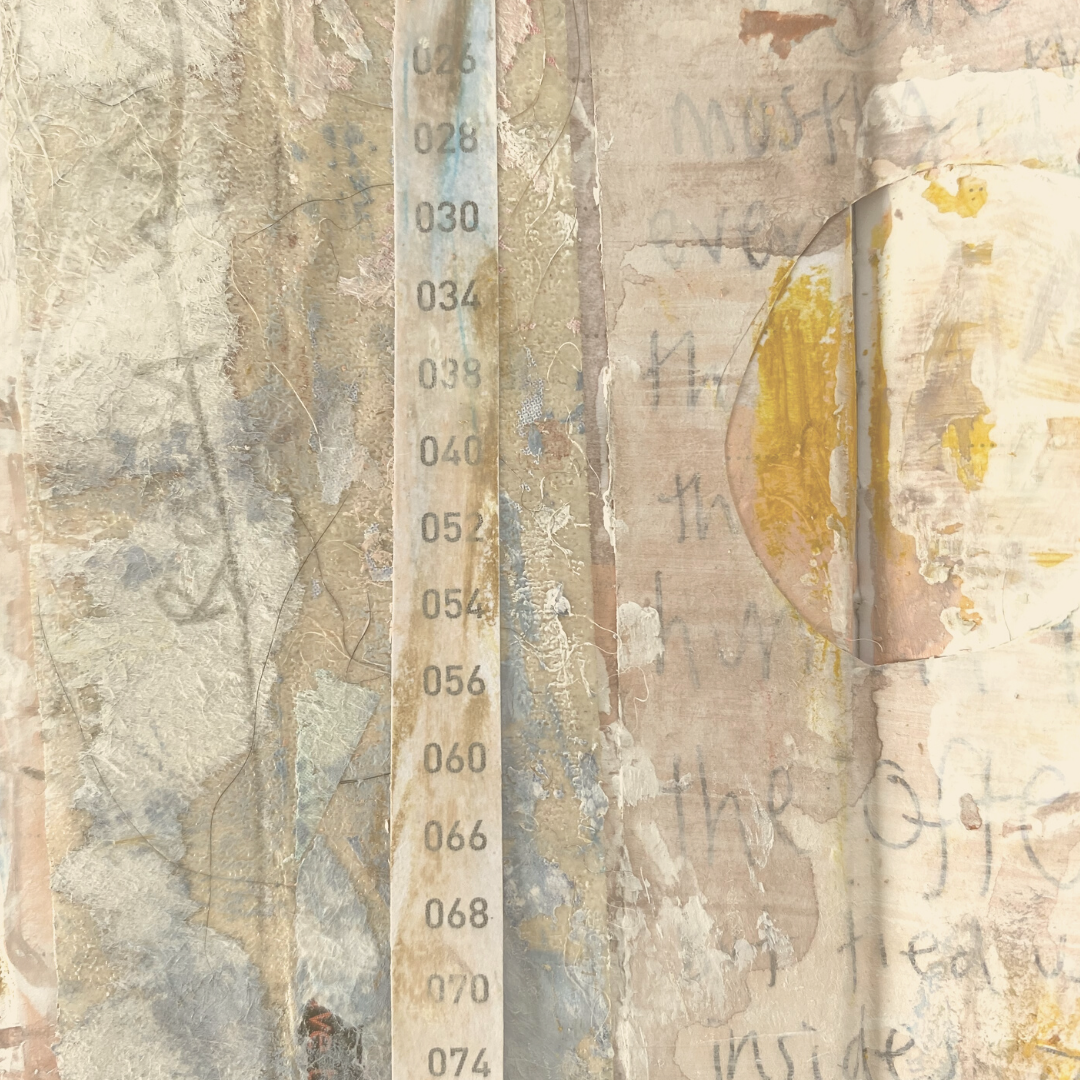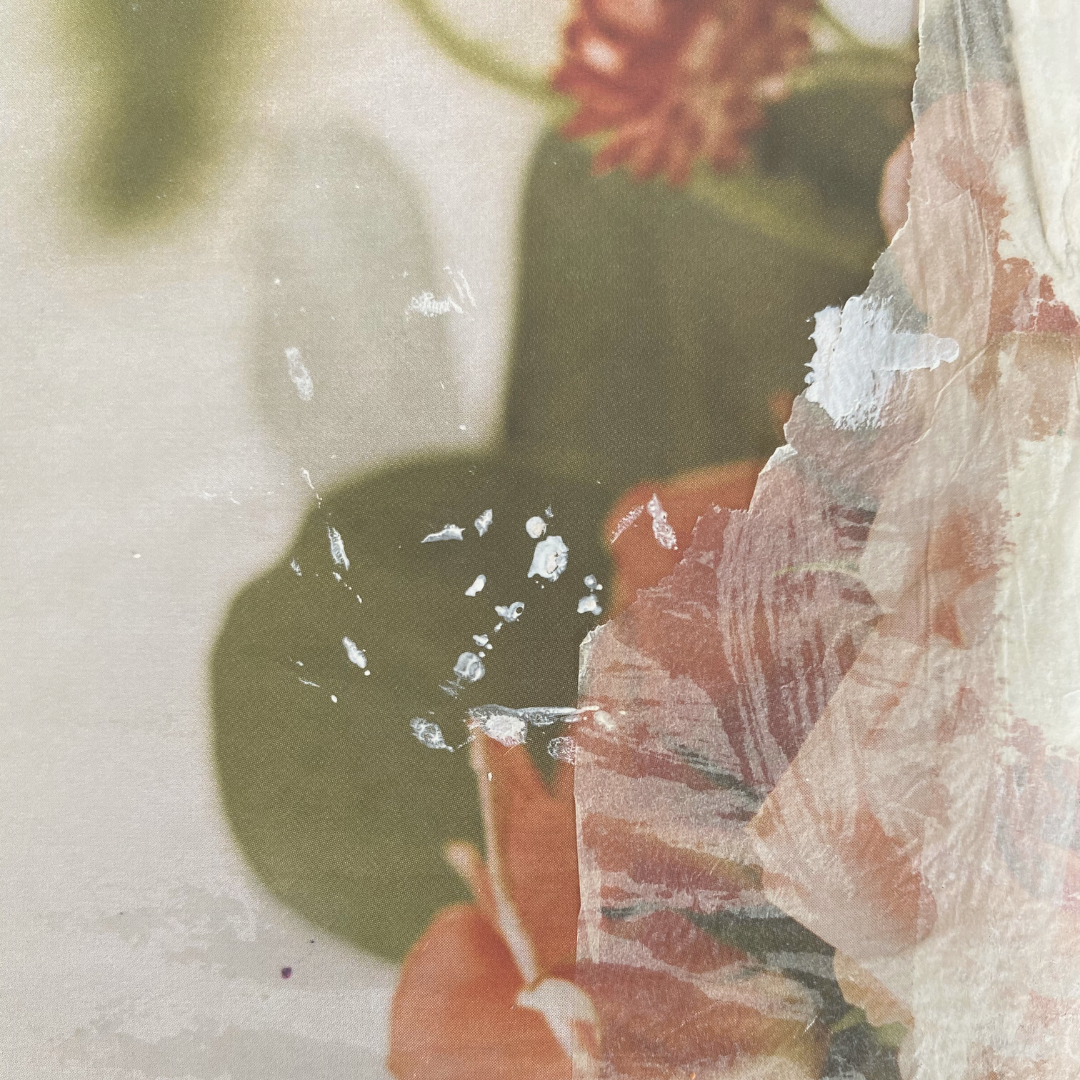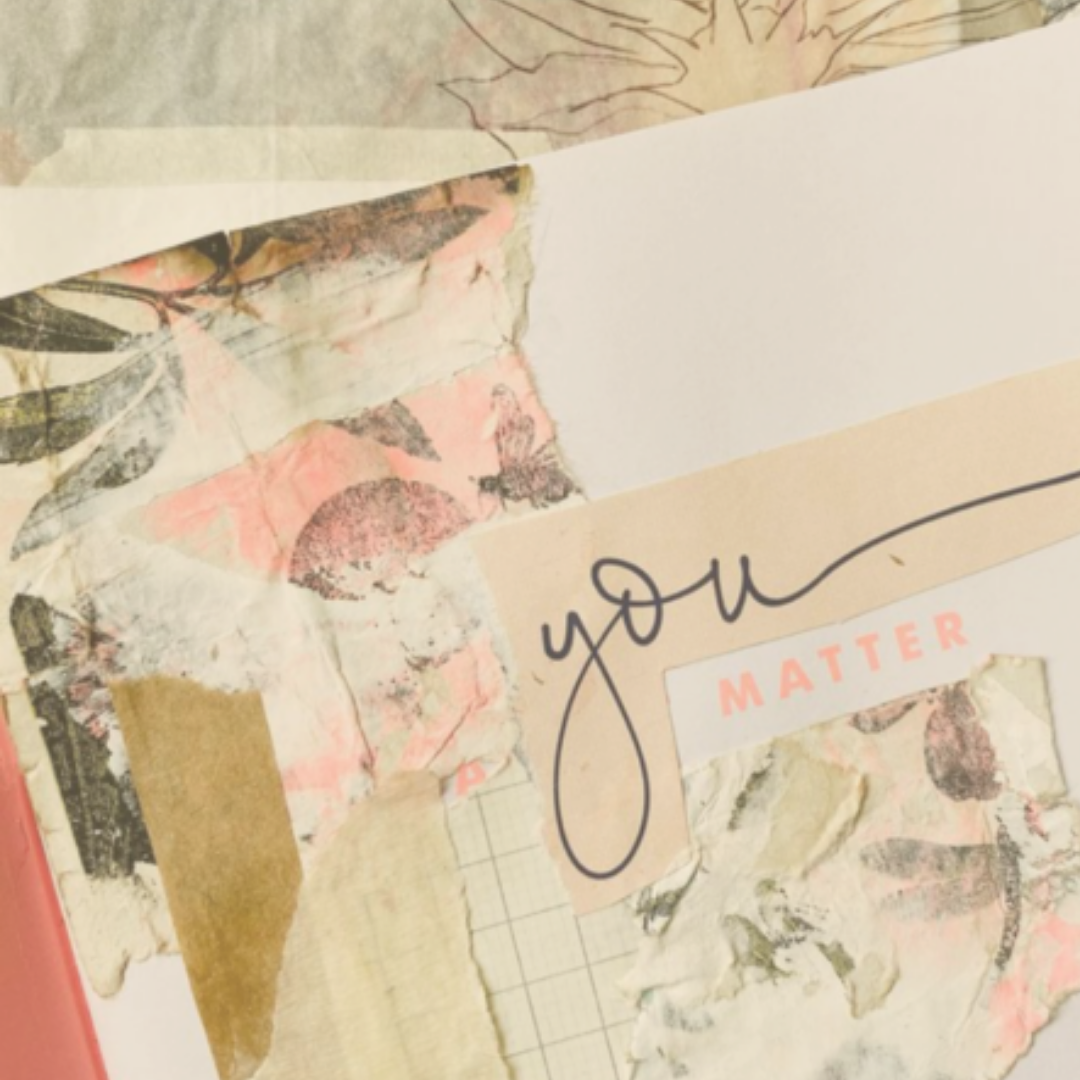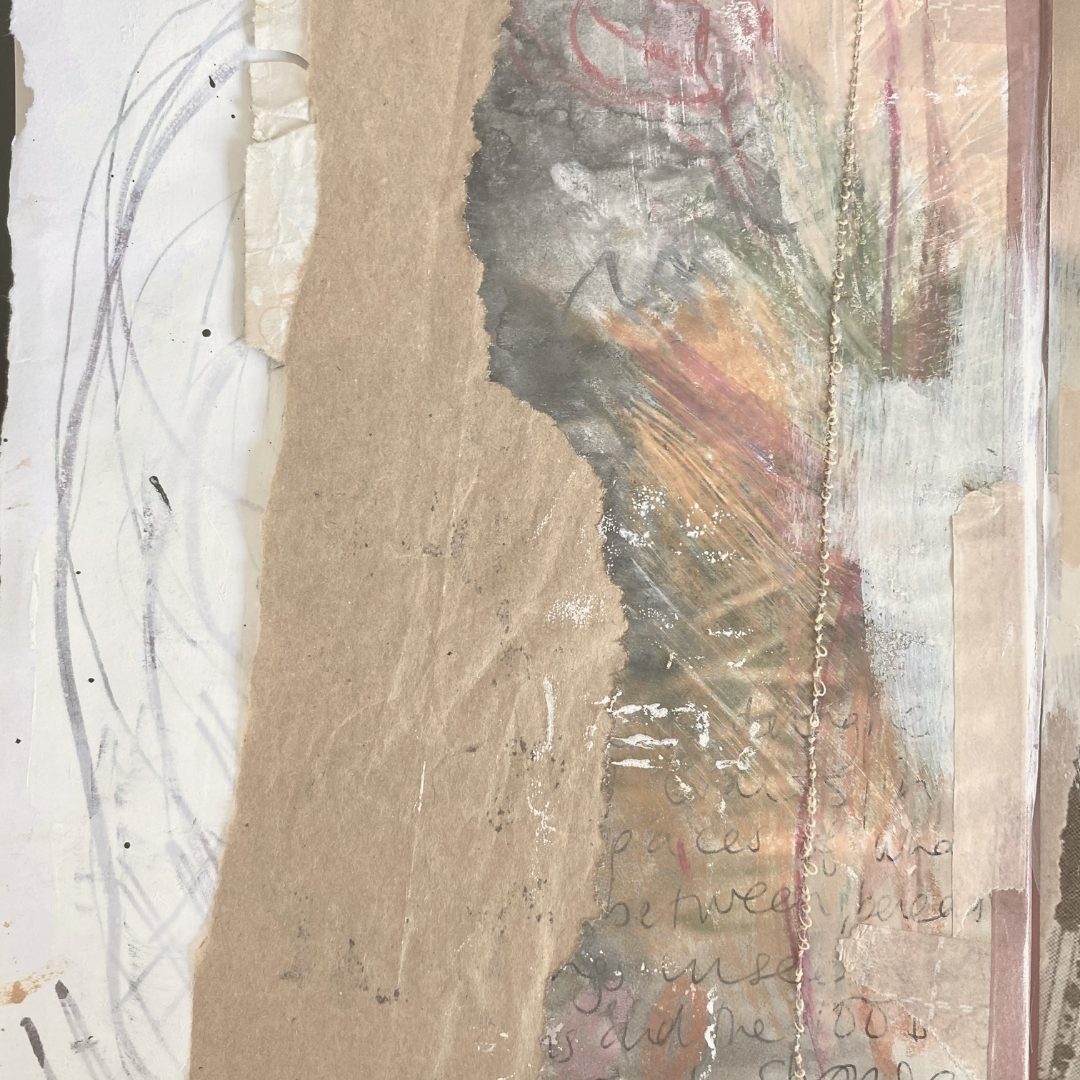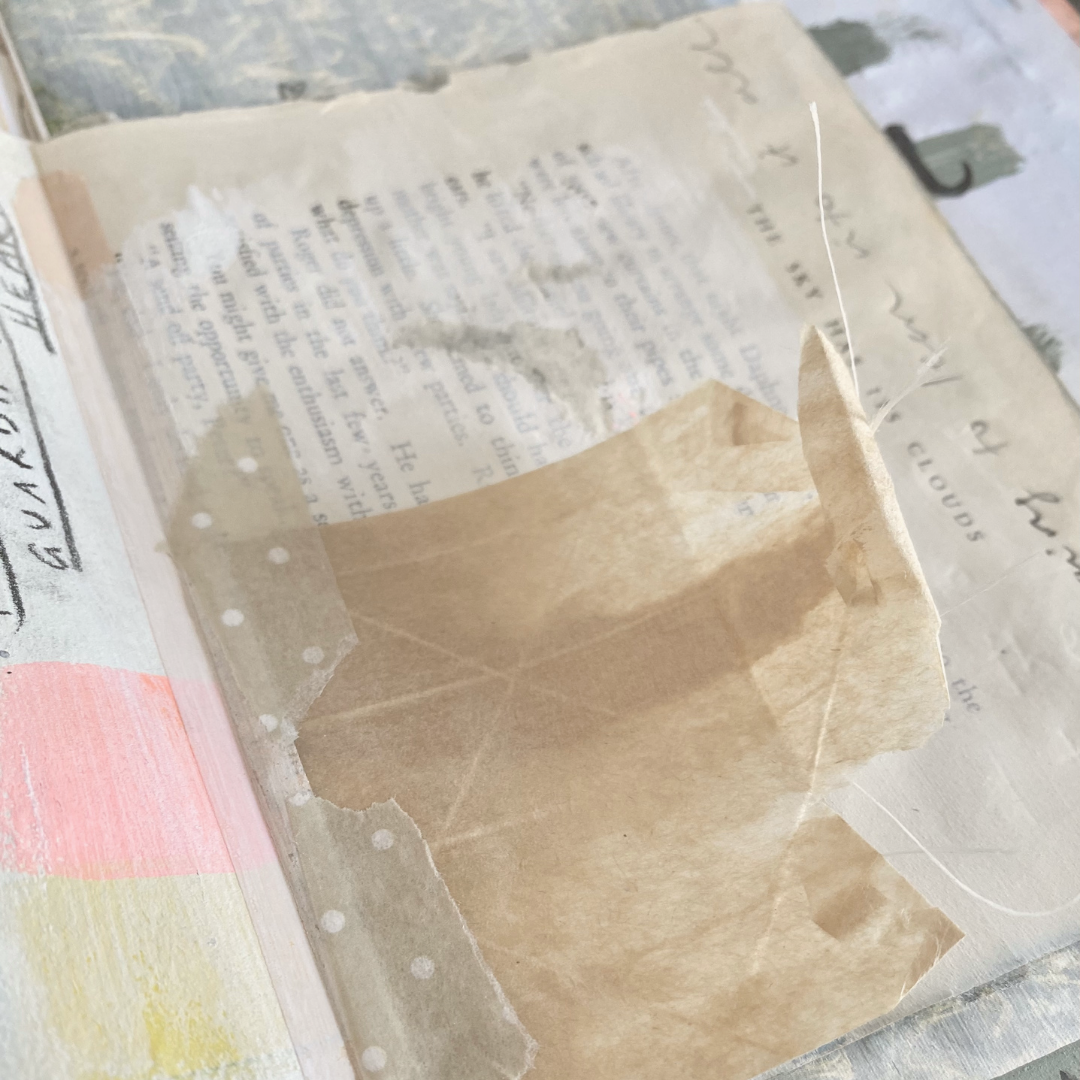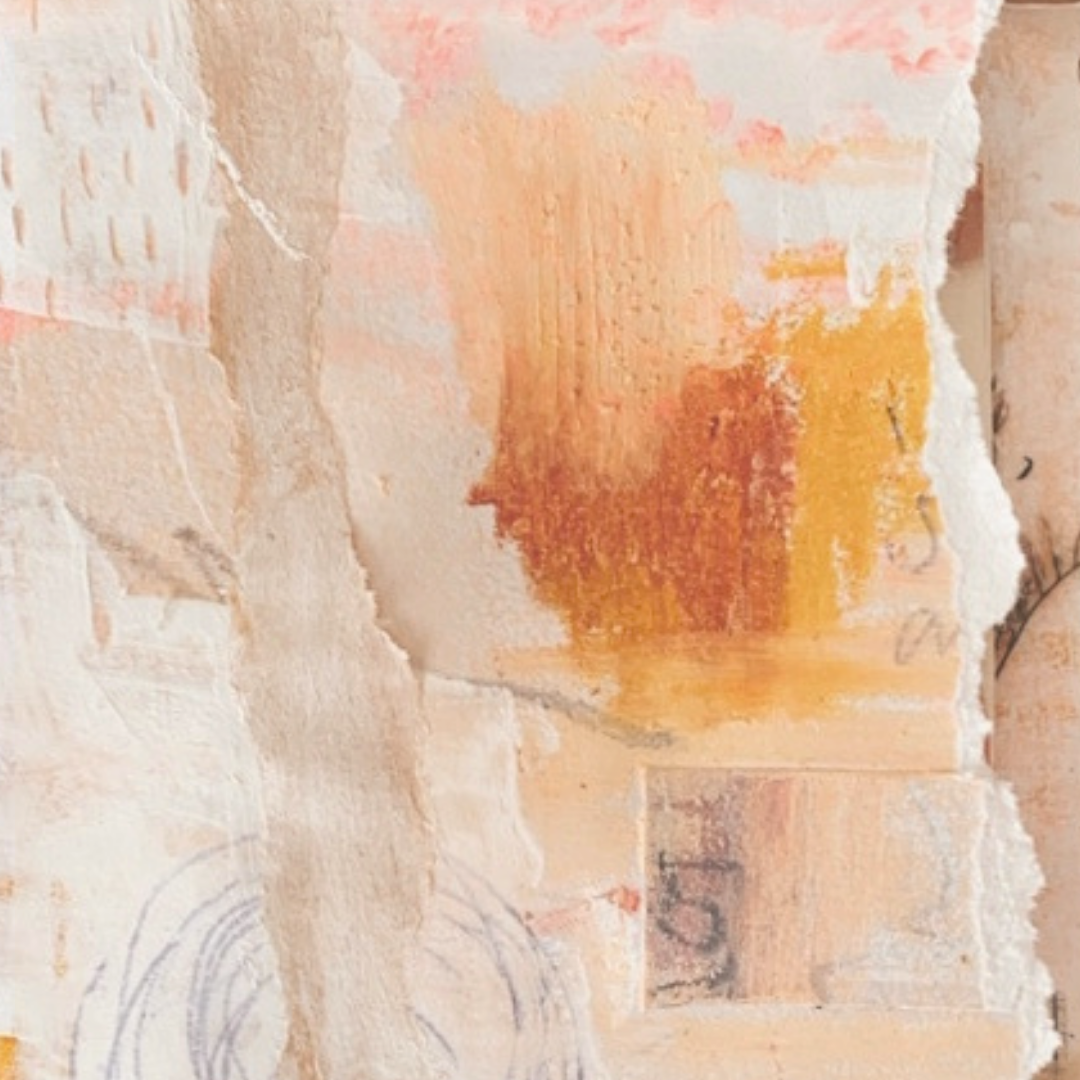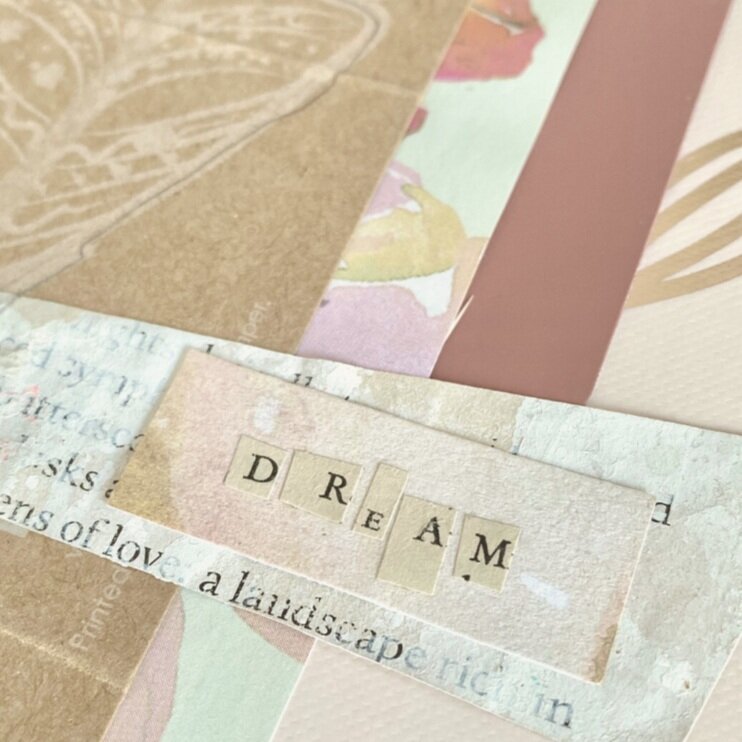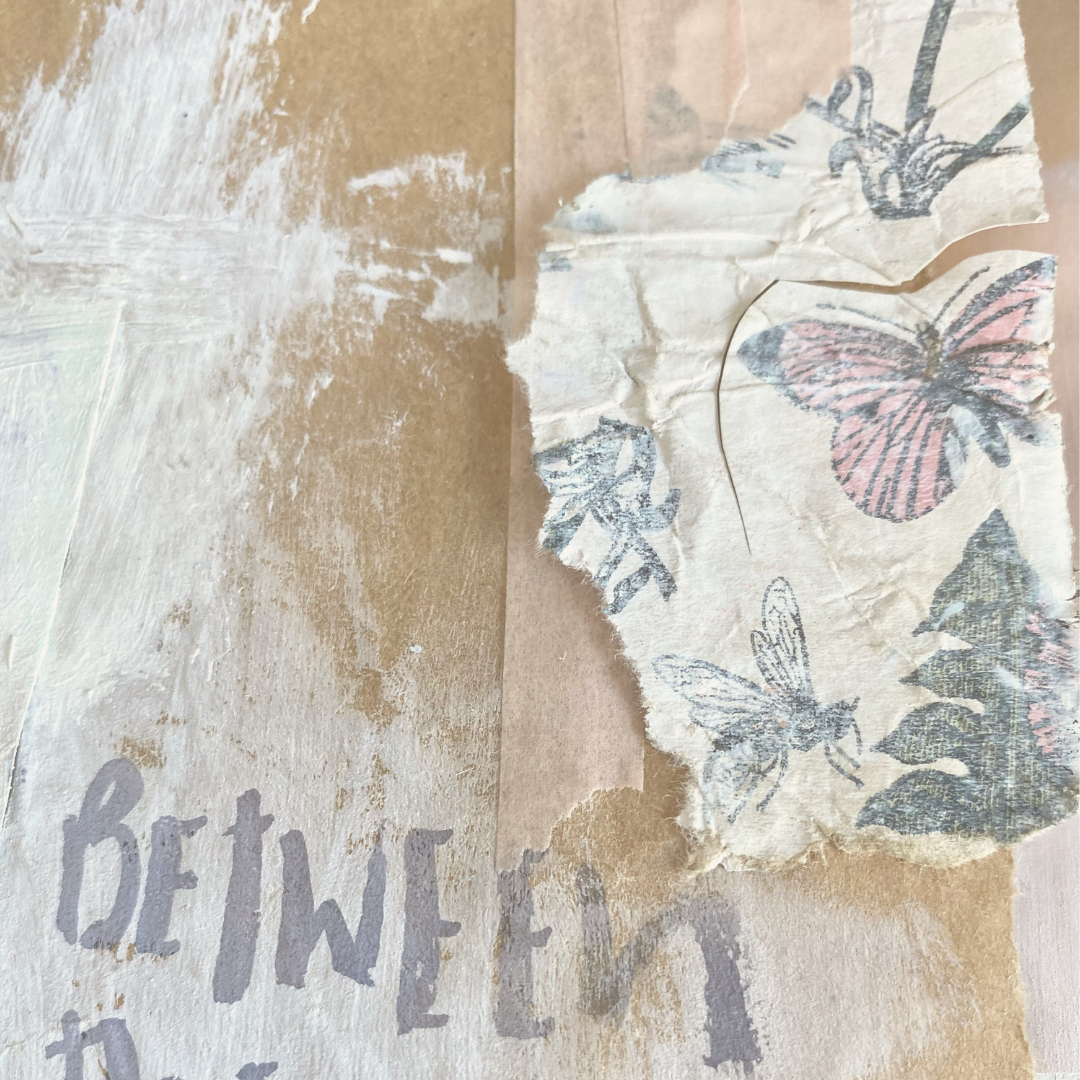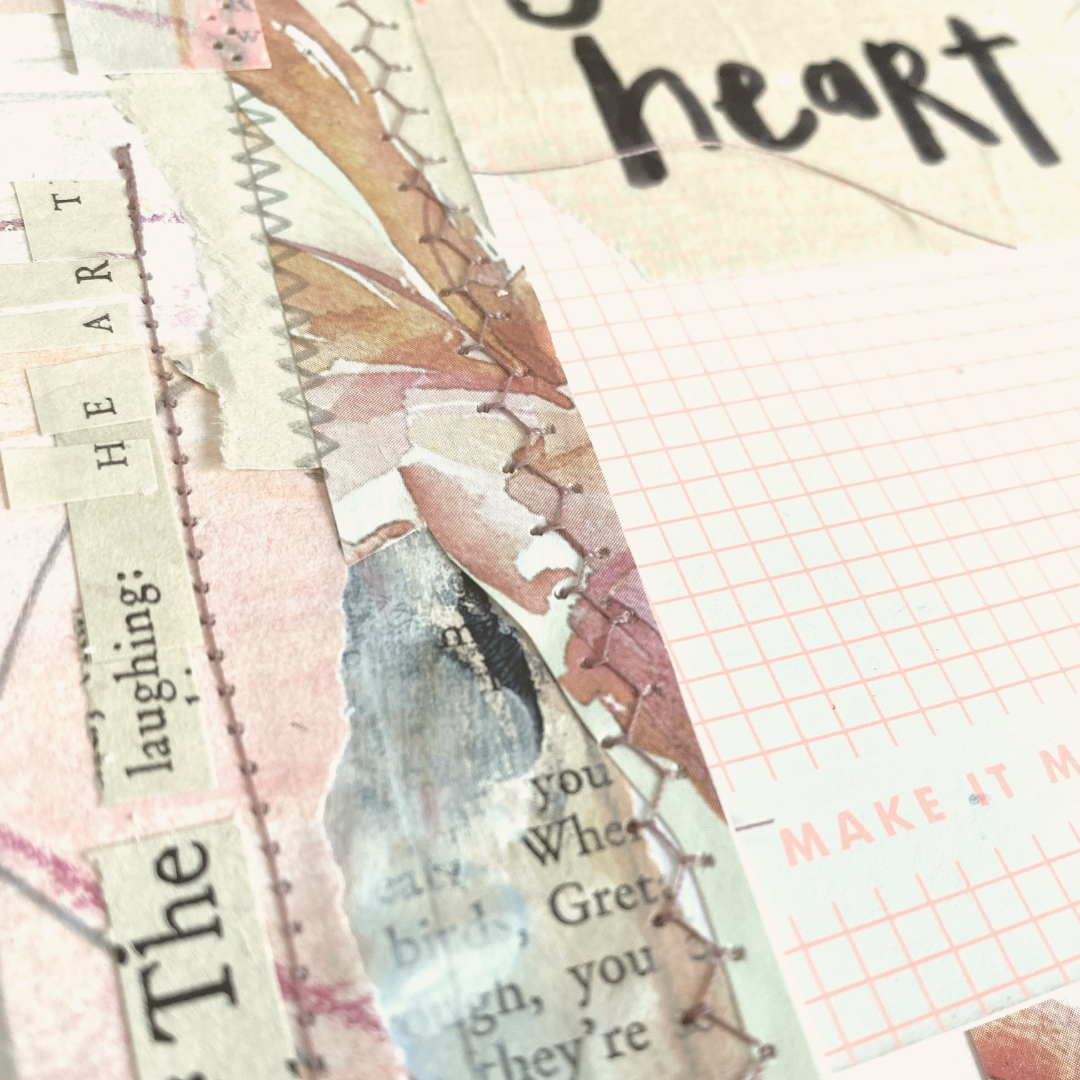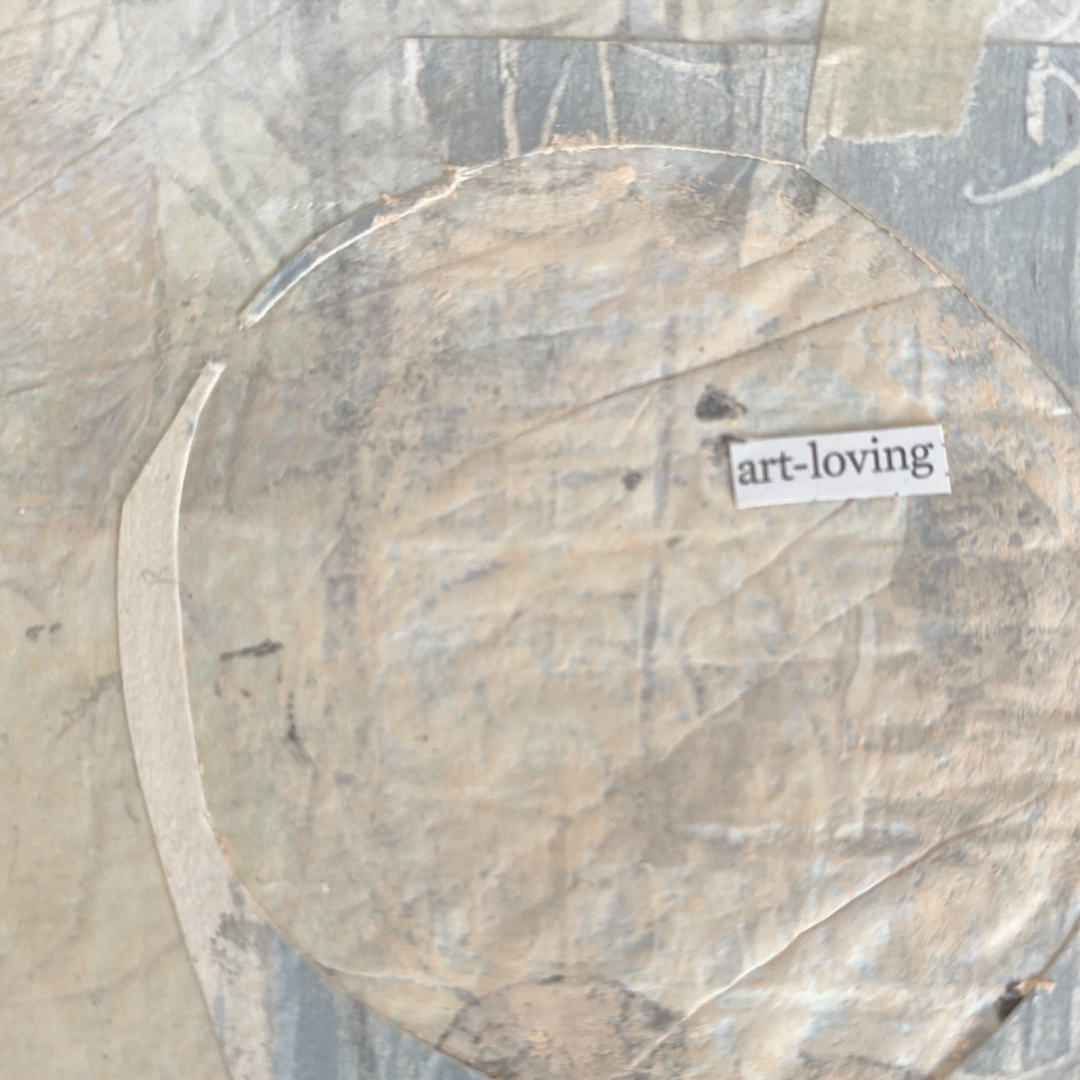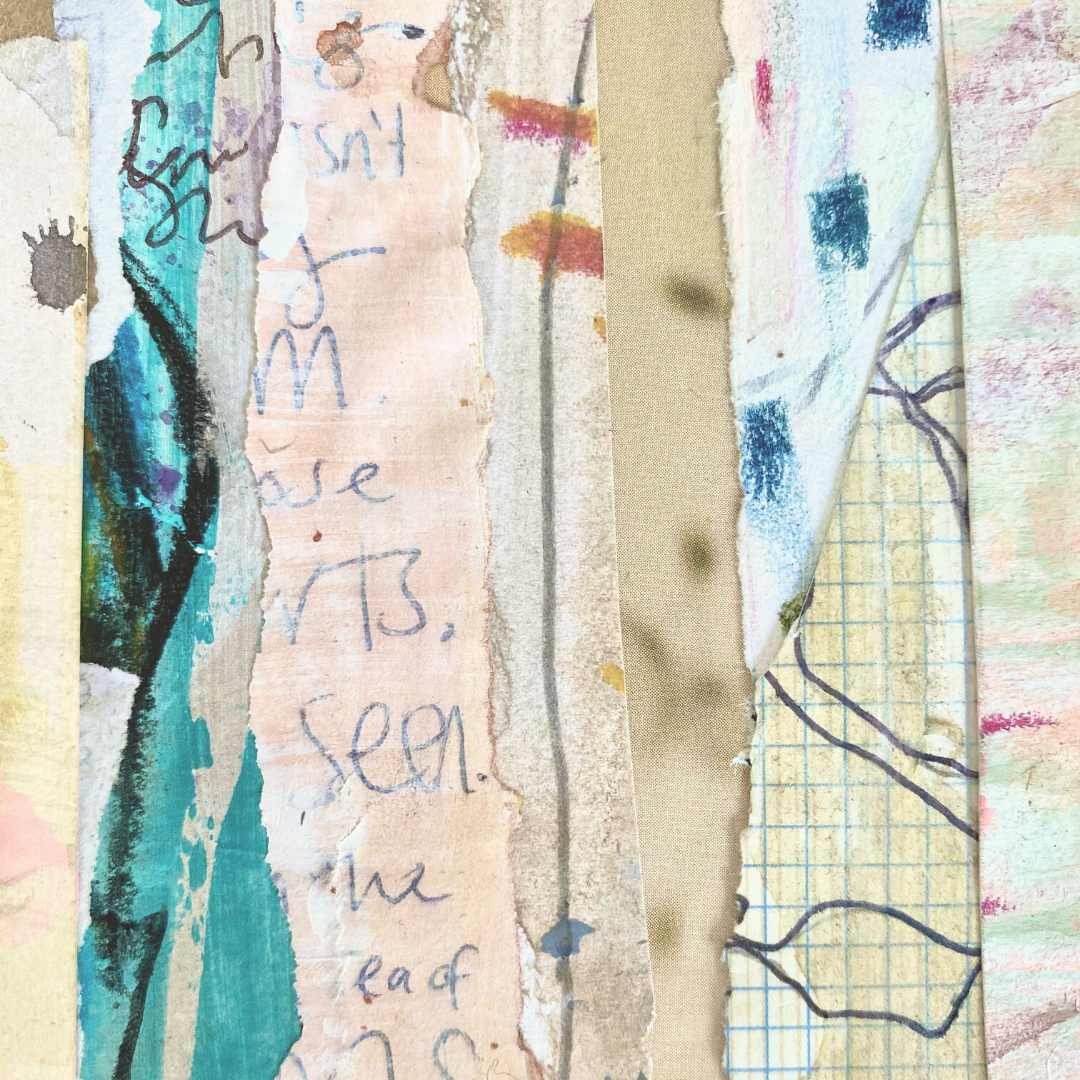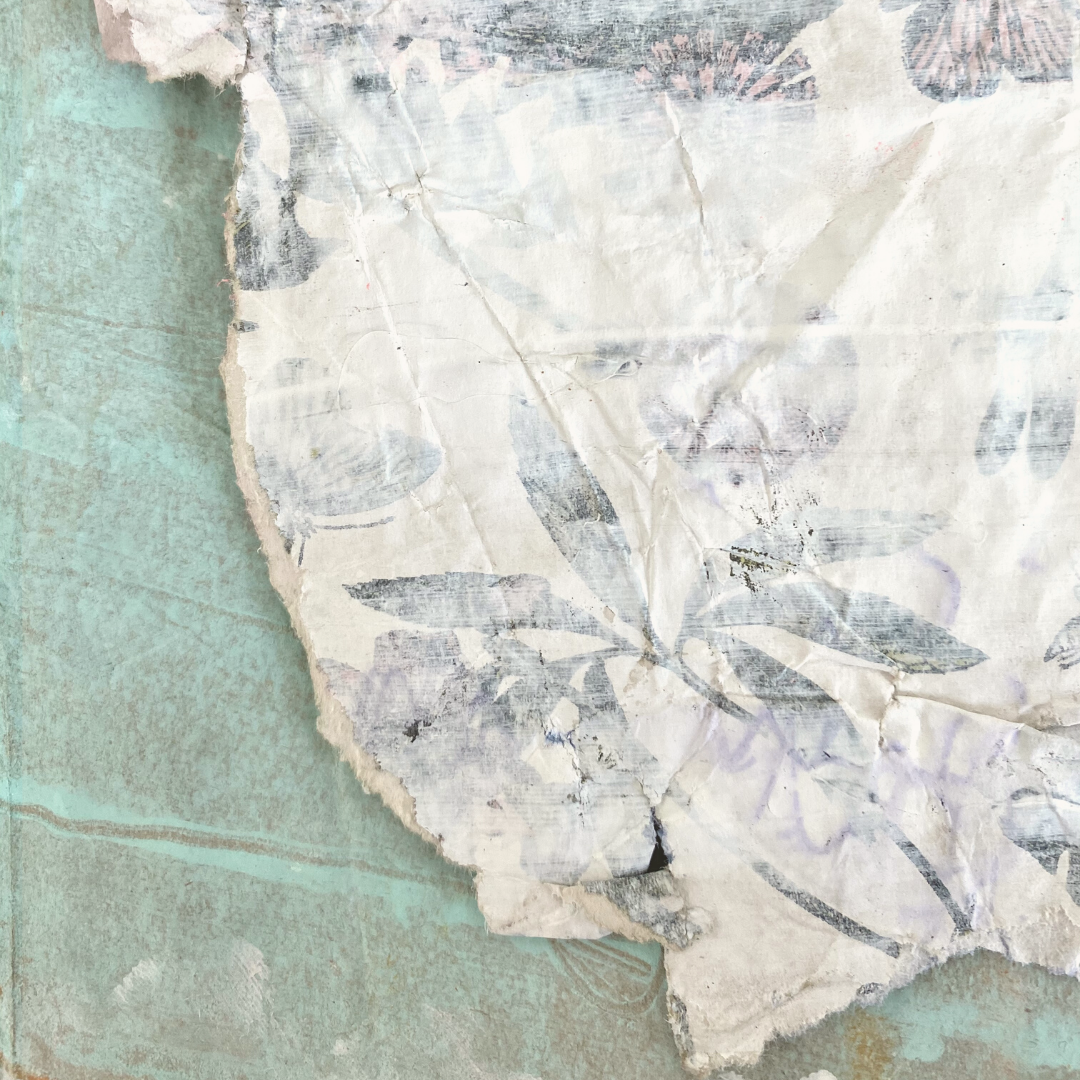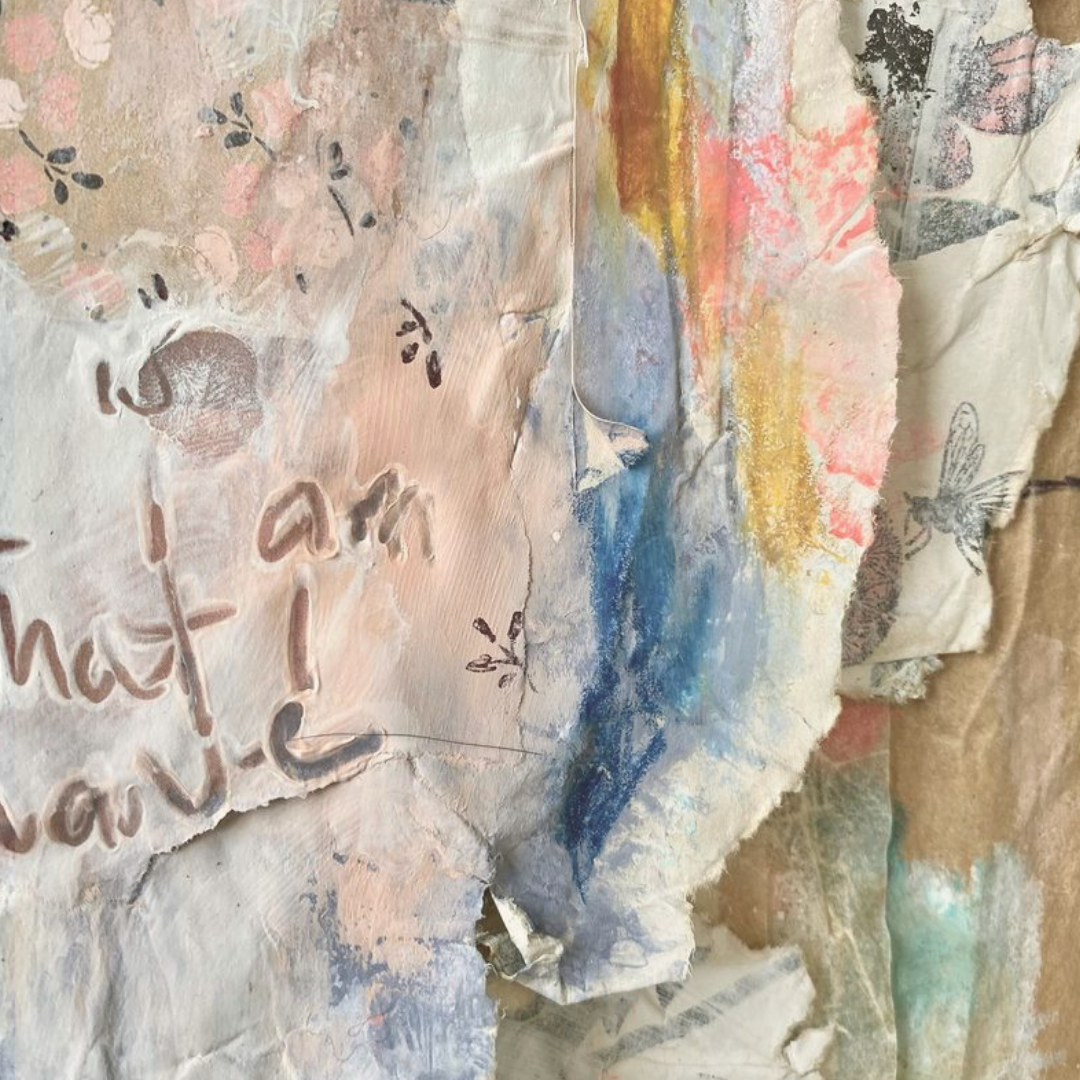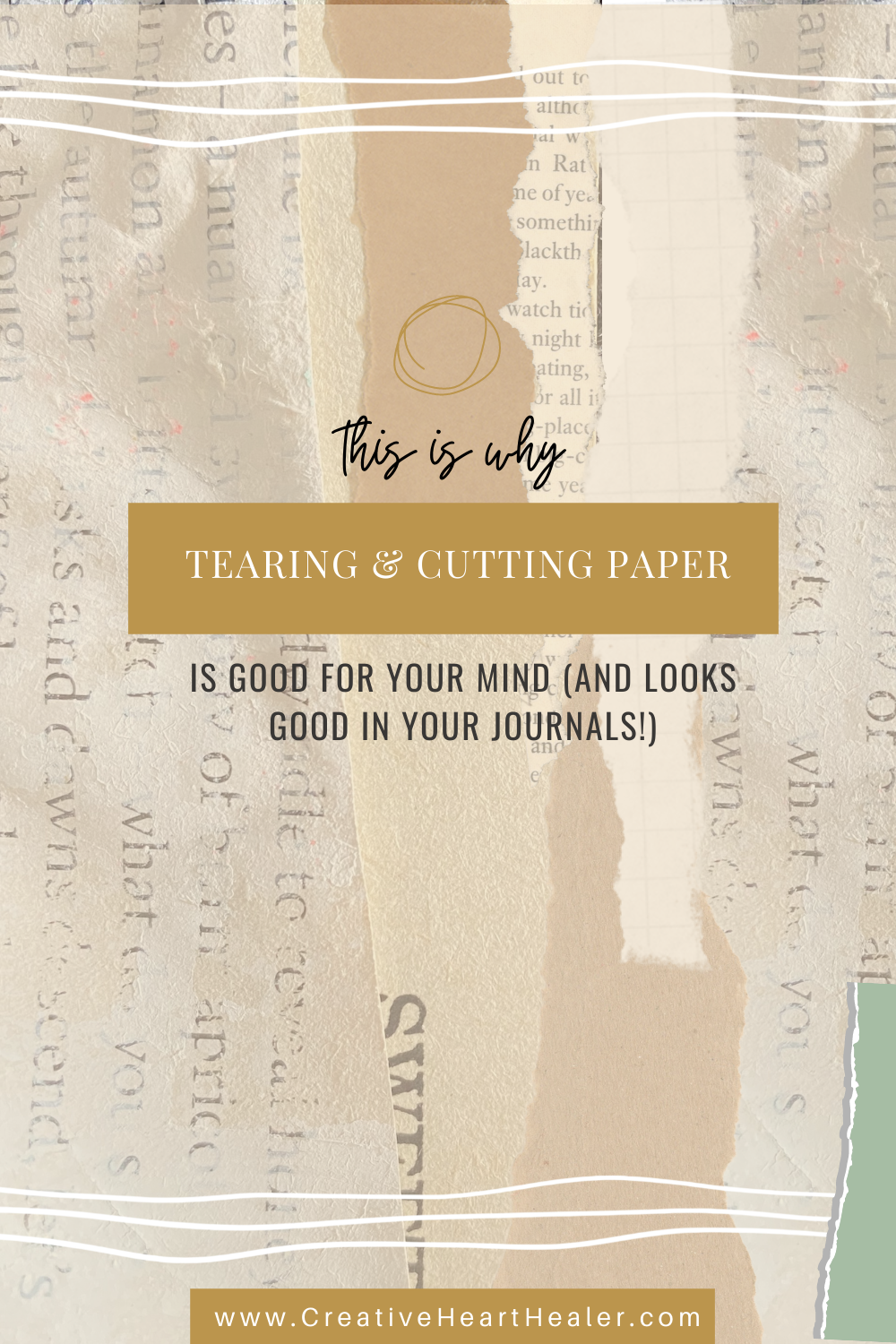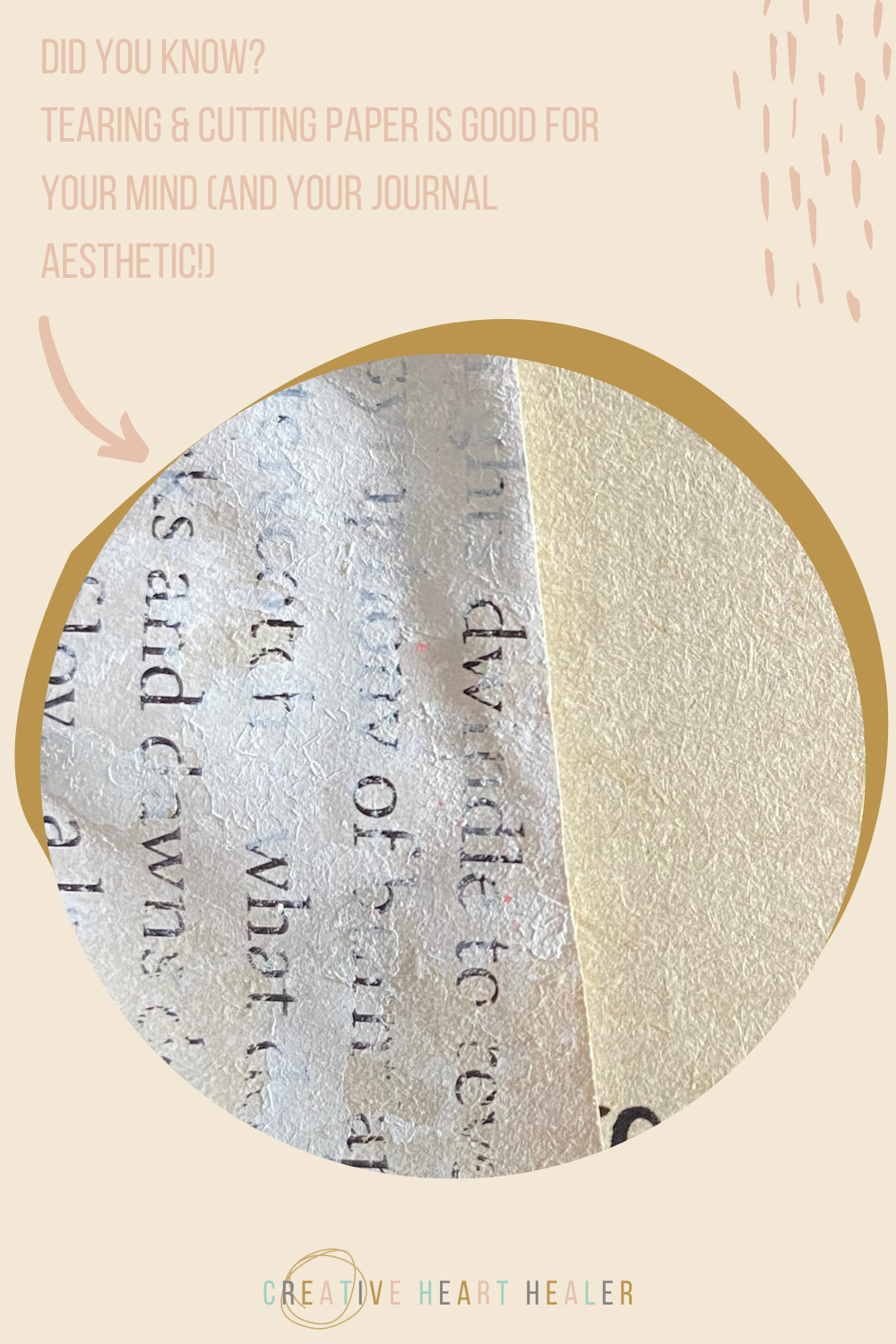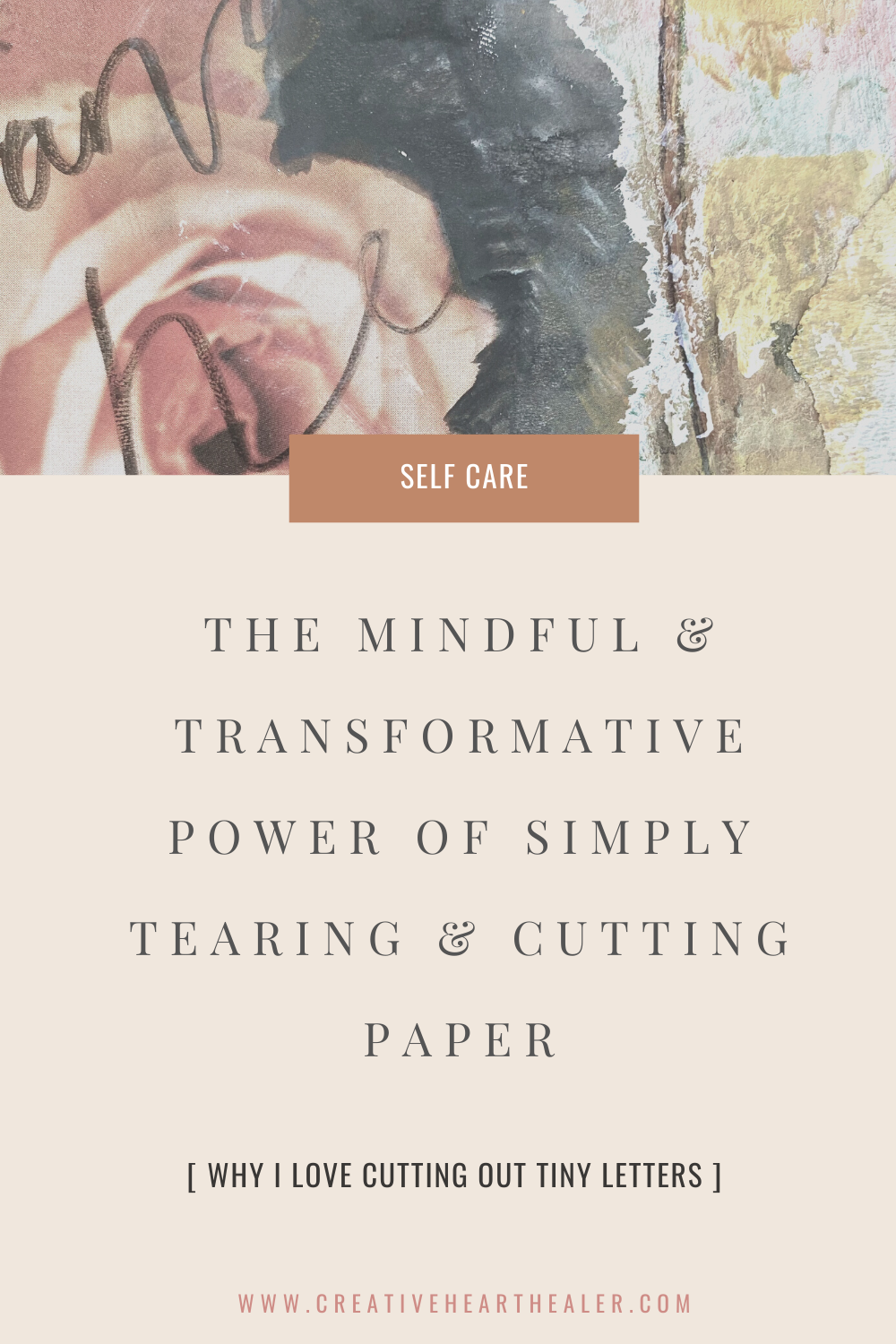THE MINDFUL & TRANSFORMATIVE POWER OF SIMPLY TEARING & CUTTING PAPER
WHY I LOVE TEARING PAPER AND CUTTING OUT TINY LETTERS FROM BOOKS
A SIMPLE ACT OF CREATIVE MINDFULNESS
I remember back in art school working on a still life drawing for a couple of hours, and then our tutor made us tear it up. I couldn’t believe it. I didn’t understand why? We did then reconstruct the bits of paper into another art piece which I loved and since then I have had a little obsession with ripping and cutting up drawings, old paper, book pages and anything else that can be ripped.
But it was only recently that I thought about why this was. Why do I enjoy this tearing and cutting paper and reconstructing it in this way in my journals?
I realised that one of the things I love about tearing and cutting paper (and art journaling in general) is that it is experiential in nature. The process is what is transformative. The act of creating is what holds power. There is deeper magic in a symbolic action - such as tearing paper - compared with just a visual representation of an idea painted on the page.
Here are 4 ways we ‘experience’ ripping and cutting paper:
Kinesthetic Outlet
Tearing or cutting paper is an outward expression of an inward experience, a physical act, a physical transformation. Oftentimes when journaling, difficult feelings or emotions rise to the surface and tearing paper is a wonderful kinesthetic outlet for releasing the energy that comes with those emotions. There is also something symbolic about tearing paper - an act of destruction - destroying a past event or a negative thought pattern along with it.
Transforming something that exists (a sheet of paper) into something new (torn paper, layered paper, tiny cut-outs etc) within our journals this way reminds us that we too have this ability to keep growing, stretching, evolving, even if we don’t know exactly what that will look like right now.
a lesson in letting go of control
We have little control when tearing a piece of paper, we can roughly guide where we want it to rip, but it might not go quite that way, it might end up ragged, it might tear smoothly, it might go the wrong direction. Many times I have ended up tearing the very part of the page I wanted to preserve and use, this is why the tearing paper is a lesson in letting go, in relinquishing control or dropping the idea of perfectionism. We just have to go with the flow (or the rip!) and embrace the end result.
When we loosen up and embrace the happy accidents that come with creating in a less controlled way, we open ourselves up to seeing something in a new way. To see things from a different perspective, to see connections that we might have missed before, all of which sparks new and exciting ideas.
AESTHETICALLY
There is something aesthetically pleasing about a torn edge, especially when layered over another texture. A simple tear in a thin sheet of paper reveals its inner beauty, its roughness, its fibres, its pressed layers.
Equally, there is something curious about a cut edge, a blunt cut where you might not expect, for example, halfway through a book page, leaving you wondering what’s been taken away and why. Cutting out particular sections of a page and reconstructing them to tell a new story is also visually powerful - found poetry is an example of this.
MINDFULLY
You may have noticed that tiny cut out letters feature in my journal pages a lot. The slow and precise act of cutting out individual letters from old books to form new words is a simple act of mindfulness for me. It is a process that allows me to be fully in the present moment, my hands, my eyes, my mind are all engaged, all focused on cutting.
Tearing paper can also be done with mindfulness, you can tear paper fast, or slow, randomly, methodically, you can tune in to the sound it makes, the feel of the torn edges, the way it looks afterwards, the smell of the paper.
If you want to learn more about how to use the transformative power of tearing paper in your art journaling, I teach a whole lesson on this in my new course, The Art of Self Care.
pin for later
If you enjoyed this post you might also like:

